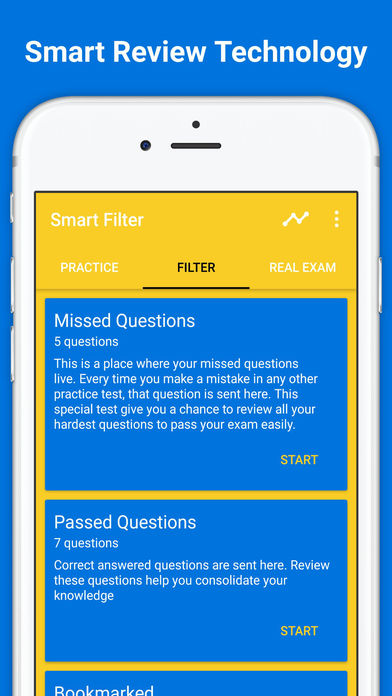
Do you really want to pass Cardiac arrhythmias exam and/or expand your knowledge & expertise effortlessly?
This best-seller mobile app help you archive your goal easily by the following unique features:
- Break learning materials into small sets of practice questions & terms
- Master each set effortlessly by many ways: flashcard, matching game, true/false, multiple choice
- Detect & separate automatically the most difficult questions
- Track your learning process on every set and exam taken
- Ready for the Exam by Exam Simulator
Premium Features:
+) Lifetime access to all Practice Questions & Terms prepared by EXPERTS for the most current exam.
+) Unlimited access to the EXAM BUILDER & SIMULATOR.
+) Automatically FILTER your most difficult questions.
+) PROGRESS TRACKING for every question & exam taken
+) Lifetime support & Updates
Free version:
+) Hundreds of practice questions & terms
+) 5 Free Exam Builder
+) Free Matching Game
+) Filter hardest and weakest questions
Cardiac arrhythmia, also known as cardiac dysrhythmia or irregular heartbeat, is a group of conditions in which the heartbeat is irregular, too fast, or too slow. A heart rate that is too fast – above 100 beats per minute in adults – is called tachycardia and a heart rate that is too slow – below 60 beats per minute – is called bradycardia.Many types of arrhythmia have no symptoms. When symptoms are present these may include palpitations or feeling a pause between heartbeats. More seriously there may be lightheadedness, passing out, shortness of breath, or chest pain. While most types of arrhythmia are not serious, some predispose a person to complications such as stroke or heart failure.
There are four main types of arrhythmia: extra beats, supraventricular tachycardias, ventricular arrhythmias, and bradyarrhythmias. Extra beats include premature atrial contractions and premature ventricular contractions. Supraventricular tachycardias include atrial fibrillation, atrial flutter, and paroxysmal supraventricular tachycardia. Ventricular arrhythmias include ventricular fibrillation and ventricular tachycardia.
Disclaimer:
This application just is an excellent tool for self-study and exam preparation. Its not affiliated with or endorsed by any testing organization, certificate, test name or trademark.



